Why Were Ba And Ka Powerful Elements Of Soul In Ancient Egyptian Beliefs?
A. Sutherland - AncientPages.com - In Egyptian beliefs, the soul had three parts, the Ka, the Ba, and the Akh. These three spiritual elements found refuge in the body. Therefore, it was vital to keep the body intact after death and to equip it with the necessary items for life.
The Ba was a spiritual aspect of an individual, usually depicted as a bird with a human head, and in this form, the Ba of a deceased person was able to move through the underworld and revisit the earth by day.
 Left: The Ba of Queen Nefertari, representing her unique character, stood before a false door, an architectural feature found on the west walls of tombs and mortuary temples. Food would be placed on an offering table in front of the door, serving as a link between the living and the dead. The ka would leave the burial chamber to partake of the offerings, providing sustenance for the deceased. The ba was expected to unite with the ka in order to transform the deceased into akh. Source; Right: One of many ancient depictions of Queen Nefertari. Credit: Public Domain
Left: The Ba of Queen Nefertari, representing her unique character, stood before a false door, an architectural feature found on the west walls of tombs and mortuary temples. Food would be placed on an offering table in front of the door, serving as a link between the living and the dead. The ka would leave the burial chamber to partake of the offerings, providing sustenance for the deceased. The ba was expected to unite with the ka in order to transform the deceased into akh. Source; Right: One of many ancient depictions of Queen Nefertari. Credit: Public Domain
So, the Ba-bird represented the ancient Egyptian concept of the soul. The Ba was power, and just as the gods had power (which they could multiply at will), the people also had their Ba.
In the beginning – during the Old Kingdom (c. 2613-2181 BC) - the Ba was only attributed to the god-king. It was expressed with the sign of the 'jabiru-bird.' The situation changed during the First Intermediate period (2181-2040 BC) and the Middle Kingdom.
The Ba, which was previously reserved for the king, became a property of ordinary people and was represented by a man-headed hawk, often depicted hovering over the mummies. Therefore, ancient graves frequently had narrow passages built for visitation by the Ba so they could quickly enter and then leave.
The Coffin Texts, a collection of ancient Egyptian funerary spells written on coffins in the First Intermediate Period (ca. 2181–2055 BC), say that Ba is separated from the body upon a person's death.
The Ba "comes out of the discharges of his flesh and the perspiration [probably =foam secreted by the corpse] of his head." Then [the grain god] Nepri is to take it away so that the Ba may see the primeval god Atum and may finally accompany him on his journey in the sun-barque." 1
However, other texts say the deceased received the Ba of the god Horus.
Ka Continued To Exist After Death
Ka survived the body's death and could reside in an image or statue of a person." It was bound to the body and represented its vital (hyper-powerful physical forces). Ka exists forever. So that 'to go to it is synonymous with 'to die' (or 'to be resurrected).
The Egyptians believed that the people were made of clay on the pottery wheel of the god Khnum, the god of fertility, associated with procreation and water, and worshiped from the 1st dynasty (c. 2925–2775)) into the early centuries AD. Another belief was that humanity was created from the tears of God Ra.
They also believed that every living being possessed a Ka, a life-like, individual personality, but a god had many Ka (plural of 'kau'). The exact significance of this aspect is still considered a matter of controversy. Still, the idea of Ka is closely related to the concept of the soul frequently compared to the second image of the person (or the person's double.)
As such, the Ka of the deceased person can continue to be active as long it has access to oils, food, and incense. Written by a hieroglyph of uplifted arms, it seems initially to have symbolized the protecting divine spirit of a person. Later, the role of Ka increased, and it began to personify physical and intellectual qualities.
Akh and the KA and BA were other principal aspects of the soul. The Akh enabled the soul to assume temporarily any form it desired to revisit the earth, but only temporarily. It was usually represented as a bird and could appear to the living as a ghost.
The ancient Egyptians believed that the union in the death of the Ba and the Ka could bring about the Akh, capable of perfectly understanding both the physical and spiritual realms.
The Akh was an undead spirit of a deceased person, and the spirit of Ra brought the concept of Maat. The aspect of Akh encapsulates the idea of light - the transfigured spirit of a person that becomes one with light after death.
Ba-bird hovering over a mummy. (After the Papyrus of Ani from Thebes, ca. 1420 BC). Image credit: British Museum
The Coffin Texts, a collection of ancient Egyptian funerary spells written on coffins in the First Intermediate Period (ca. 2181–2055 BC) say that Ba is separated from the body upon a person's death. The Ba "comes out of the discharges of his flesh and the perspiration [probably =foam secreted by the corpse] of his head.” Then [the grain god] Nepri is to take it away, so that the Ba may see the primeval god Atum and may finally accompany him on his journey in the sun-barque." 1
However, according to some other texts, the deceased received the Ba of the god Horus.
Ka Continued To Exist After Death
Ka survived the death of the body and could reside in an image or statue of a person. It was bound to the body and represented its vital (hyper-powerful physical forces). This Ka, which thus exists forever, so that ‘to go to it’ is synonymous with ‘to die’ (or ‘to be resurrected), is created, like man himself.” 1
The Egyptians believed that the people were made of clay on the pottery wheel of the god Khnum, the god of fertility, associated with procreation and water, and worshiped from the 1st dynasty (c. 2925–2775)) into the early centuries AD. Another belief was that humanity was created from the tears of God Ra.
They also believed that every living being possessed a Ka, a life-like, individual personality, but a god had many Ka (plural of ‘kau’). The exact significance of this aspect is still considered a matter of controversy, but the idea of Ka is considered to be closely related to the concept of soul frequently compared to the second image of the person (or the person’s double.)
As such, the Ka of the deceased person can continue to be active as long it had access to oils, food, and incense. Written by a hieroglyph of uplifted arms, it seems initially to have symbolized the protecting divine spirit of a person. Later, the role of ka increased and it began to personify both physical and intellectual qualities.
Akh – along with the KA and BA – was another principal aspect of the soul. The Akh enabled the soul to assume temporarily any form it desired in order to revisit the earth, but only temporarily. It was usually represented as a bird and could appear to the living as a ghost.
The Akh was an undead spirit of a deceased person, and the spirit of Ra, who brought the concept of Maat. The aspect of Akh encapsulates the concept of light - the transfigured spirit of a person that becomes one with light after death. The ancient Egyptians believed that the union in death of the Ba and the Ka could bring about the Akh, capable to perfectly understand both the physical and spiritual realms.
Written by – A. Sutherland - AncientPages.com Senior Staff Writer
Updated on Feb 2, 2023
Copyright © AncientPages.com All rights reserved. This material may not be published, broadcast, rewritten or redistributed in whole or part without the express written permission of AncientPages.com
Expand for referencesMore From Ancient Pages
-
 Almost 1000 Previously Undiscovered Prehistoric Barrows Identified In The Netherlands
Archaeology | Oct 15, 2024
Almost 1000 Previously Undiscovered Prehistoric Barrows Identified In The Netherlands
Archaeology | Oct 15, 2024 -
 Gashadokuro: A Terrifying Nocturnal Ghost Yokai With Voracious Appetite For Human Blood
Featured Stories | Jul 16, 2023
Gashadokuro: A Terrifying Nocturnal Ghost Yokai With Voracious Appetite For Human Blood
Featured Stories | Jul 16, 2023 -
 Mysterious Ancient Structures Hidden Under The Sand In The Sahara Desert Could Re-Write History Of Ancient Egypt
Ancient Mysteries | May 30, 2015
Mysterious Ancient Structures Hidden Under The Sand In The Sahara Desert Could Re-Write History Of Ancient Egypt
Ancient Mysteries | May 30, 2015 -
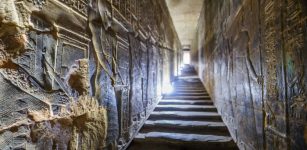 What Happened To The Staircase In The Temple Of The Goddess Hathor?
Civilizations | Mar 9, 2017
What Happened To The Staircase In The Temple Of The Goddess Hathor?
Civilizations | Mar 9, 2017 -
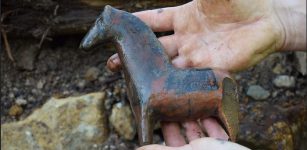 World’s Oldest Dala Horse Discovered In Sweden
Archaeology | Jul 18, 2020
World’s Oldest Dala Horse Discovered In Sweden
Archaeology | Jul 18, 2020 -
 Ancient Fossil Found In Sahara Suggests Loch Ness Monster Could Be Real
Archaeology | Jul 27, 2022
Ancient Fossil Found In Sahara Suggests Loch Ness Monster Could Be Real
Archaeology | Jul 27, 2022 -
 On This Day In History: 4000 Defenders Of Pilėnai Commit Mass Suicide When Attacked By Teutonic Knights – On Feb 25, 1336
News | Feb 25, 2017
On This Day In History: 4000 Defenders Of Pilėnai Commit Mass Suicide When Attacked By Teutonic Knights – On Feb 25, 1336
News | Feb 25, 2017 -
 Did Ancient Seafarers In Southeast Asia Build Sophisticated Boats As Far Back As 40,000 Years Ago?
Archaeology | Feb 24, 2025
Did Ancient Seafarers In Southeast Asia Build Sophisticated Boats As Far Back As 40,000 Years Ago?
Archaeology | Feb 24, 2025 -
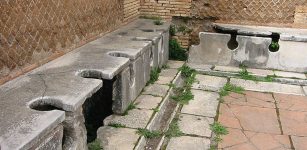 The Romans Spread Parasites – Their Hygienic Innovations Gave No Health Benefit
Archaeology | Jan 9, 2016
The Romans Spread Parasites – Their Hygienic Innovations Gave No Health Benefit
Archaeology | Jan 9, 2016 -
 Sinuses Prevented Prehistoric Crocodile Relatives From Deep Diving
Evolution | Nov 7, 2024
Sinuses Prevented Prehistoric Crocodile Relatives From Deep Diving
Evolution | Nov 7, 2024 -
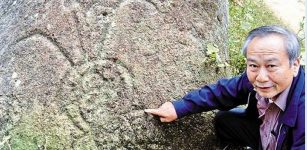 Extraterrestrial Visit Recorded On Stone: They Came From The Stars
Featured Stories | May 4, 2014
Extraterrestrial Visit Recorded On Stone: They Came From The Stars
Featured Stories | May 4, 2014 -
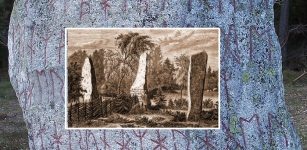 Björketorp Runestone With Frightening Message Is Still Untouched In Blekinge, Sweden
Featured Stories | Mar 19, 2023
Björketorp Runestone With Frightening Message Is Still Untouched In Blekinge, Sweden
Featured Stories | Mar 19, 2023 -
 Acheulian Culture Of Ethiopian Highlands And Their Prehistoric Tool Selection To Make Society’s Life Easier
Archaeology | Jan 10, 2025
Acheulian Culture Of Ethiopian Highlands And Their Prehistoric Tool Selection To Make Society’s Life Easier
Archaeology | Jan 10, 2025 -
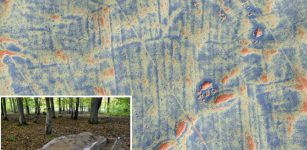 Unknown 2,000-Year-Old Settlement Hidden In The Polish Tuchola Forest Revealed By LIDAR
Archaeology | Feb 18, 2019
Unknown 2,000-Year-Old Settlement Hidden In The Polish Tuchola Forest Revealed By LIDAR
Archaeology | Feb 18, 2019 -
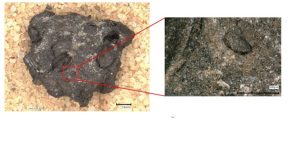 Millet Bread And Pulse Dough From Early Iron Age South India
Archaeology | Dec 20, 2021
Millet Bread And Pulse Dough From Early Iron Age South India
Archaeology | Dec 20, 2021 -
 How Extensively Did Early Farmers Utilize Europe’s Rich Forests For Raising Their Livestock?
Archaeology | Nov 13, 2024
How Extensively Did Early Farmers Utilize Europe’s Rich Forests For Raising Their Livestock?
Archaeology | Nov 13, 2024 -
 Mysterious Ancient People Who Mastered Thought-Transmission Through Space And Spoke At Distance
Ancient Mysteries | Apr 26, 2021
Mysterious Ancient People Who Mastered Thought-Transmission Through Space And Spoke At Distance
Ancient Mysteries | Apr 26, 2021 -
 Carved Symbols Related To The Galician Castro Culture Discovered At Castro de San Vicenzo, Orense, Spain
Archaeology | Oct 11, 2024
Carved Symbols Related To The Galician Castro Culture Discovered At Castro de San Vicenzo, Orense, Spain
Archaeology | Oct 11, 2024 -
 Amazing Giant Rock Engravings Discovered In South America May Be The World’s Largest
Archaeology | Jun 5, 2024
Amazing Giant Rock Engravings Discovered In South America May Be The World’s Largest
Archaeology | Jun 5, 2024 -
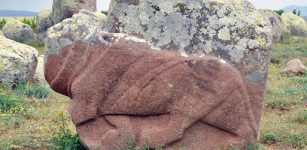 Mystery Of Gigantic Lion Sculptures Dated To The Hittite Era
Archaeology | Apr 14, 2016
Mystery Of Gigantic Lion Sculptures Dated To The Hittite Era
Archaeology | Apr 14, 2016

